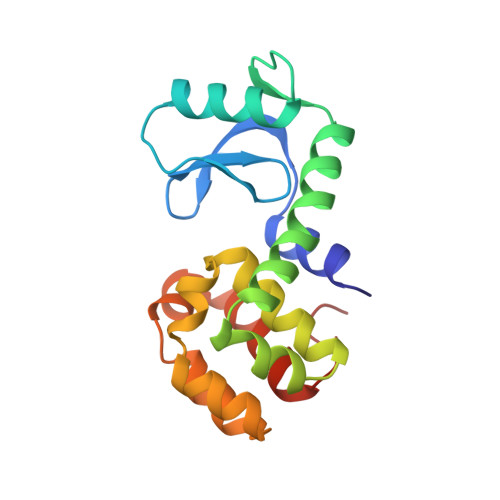Tolerance of T4 lysozyme to proline substitutions within the long interdomain alpha-helix illustrates the adaptability of proteins to potentially destabilizing lesions.
Sauer, U.H., San, D.P., Matthews, B.W.(1992) J Biol Chem 267: 2393-2399
- PubMed: 1733941
- Primary Citation of Related Structures:
1L76 - PubMed Abstract:
To investigate the ability of a protein to accommodate potentially destabilizing amino acid substitutions, and also to investigate the steric requirements for catalysis, proline was substituted at different sites within the long alpha-helix that connects the amino-terminal and carboxyl-terminal domains of T4 lysozyme. Of the four substitutions attempted, three yielded folded, functional proteins. The catalytic activities of these three mutant proteins (Q69P, D72P, and A74P) were 60-90% that of wild-type. Their melting temperatures were 7-12 degrees C less than that of wild-type at pH 6.5. Mutant D72P formed crystals isomorphous with wild-type allowing the structure to be determined at high resolution. In the crystal structure of wild-type lysozyme the interdomain alpha-helix has an overall bend angle of 8.5 degrees. In the mutant structure the introduction of the proline causes this bend angle to increase to 14 degrees and also causes a corresponding rotation of 5.5 degrees of carboxyl-terminal domain relative to the amino-terminal one. Except for the immediate location of the proline substitution there is very little change in the geometry of the interdomain alpha-helix. The results support the view that protein structures are adaptable and can compensate for potentially destabilizing amino acid substitutions. The results also suggest that the precise shape of the active site cleft of T4 lysozyme is not critical for catalysis.
Organizational Affiliation:
Institute of Molecular Biology, Howard Hughes Medical Institute, University of Oregon, Eugene 97403.
















